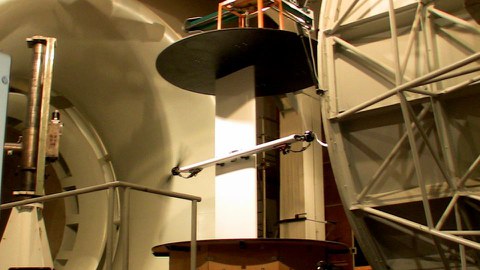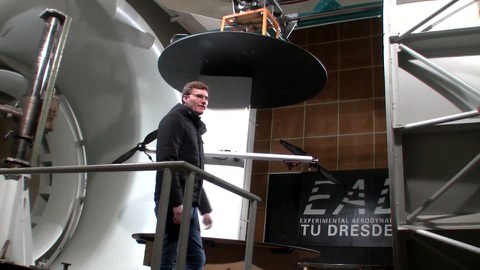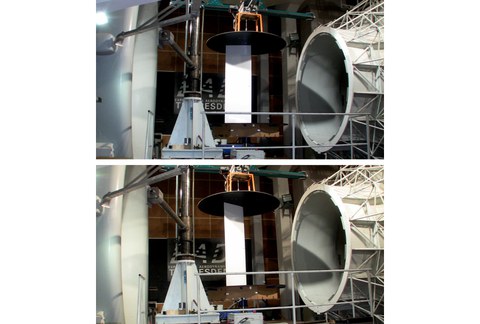Nov 27, 2023
The Future of Parcel Delivery

Measuring arrangement with wing and two swivel propellers in cruising position
Last week in the wind tunnel was dedicated to measurements on a wing and tilting propeller arrangement for the Fraunhofer project ALBACOPTER, a transport UAV capable of vertical take-off with a flight mass of up to 130 kg and a wingspan of 7 m, which can operate at a cruising speed of about 110 km/h. It is being developed by a consortium of six Fraunhofer Institutes, led by the Institute for Transportation and Infrastructure Systems (IVI) in Dresden. Representatives of the Institute for Chemical Technology (ICT) from Karlsruhe and the Institute for Mechatronic Design Technology (IEM) from Paderborn were present at the measurements.
The measurement setup consisted of a wing segment with a wingspan of 2 m, which was positioned in a knife flight position between two end plates in the test section. It was connected to six force sensors and also has pressure taps to determine the pressure distribution at two span positions. Two electric motors, each with a propeller, were mounted on a support beam on the pressure side, one in a pull and one in a push arrangement. Both can also be tilted in such a way that they provide lift in hovering flight. The finished aircraft will have four such support arms with a total of eight engines and propellers.

Udo Nolte from IEM explains how the tilting mechanism works
To determine the characteristics, various combinations of angle of attack and tilting angle as well as airspeed to rotational speed were adjusted and the aerodynamic forces were measured. After overcoming considerable difficulties both in a previous measurement campaign and in the preparation of the current one, the measurement technology now worked perfectly.

Pressure distribution measurement on the smooth wing at angles of attack from -15° to +30°
The characteristics of the wing profile largely correspond to what was used as a basis for the design of the aircraft. Furthermore, it turned out that the propellers meet the requirements in hovering flight, but that there is still a certain need for optimization for cruising flight. The soundscape of the propellers is impressive.
